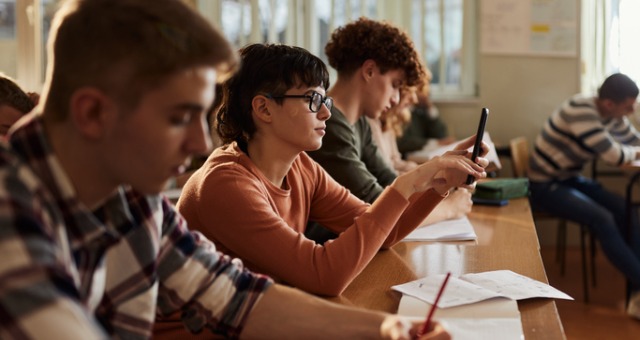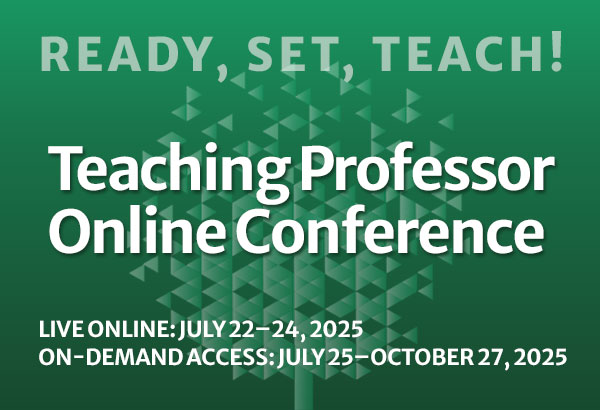As I sat in a lecture attended by all first-year students at our college, I noticed the scale of a troubling trend: the rise of “snapnotes.” Snapnotes are what I like to call when students “take notes” by snapping a picture of a PowerPoint slide on their phone. While the trend has been around since the advent of phones with reasonable cameras and data storage, anecdotally, the COVID-19 pandemic has made this practice much more widespread.
The negative results of this practice for students could not come at a worse time, with disruptions to middle and high school classes due to the pandemic leaving some students underprepared for college-level coursework. Even before the pandemic, students often arrived at college without learning how to take effective notes. To add ineffective notetaking to lower content knowledge, fewer opportunities to practice skills in writing and speaking, and, for some, a return to in-person learning after lengthy time spent in online classrooms, presents an even greater hindrance to student learning and success.
Fortunately, instructors have the ability to intervene and use this as an educational opportunity for students to position themselves for greater success.
The origins of the problem
To get a sense of why this problem was accelerating, I spoke informally with several students at my college about their notetaking strategies. Unsurprisingly, notetaking strategies varied widely, and mostly consisted of doing whatever got them through high school. In years of working with new students, this is the most common “strategy” that students claim when referring to notetaking: It is something I have never really thought about.
Next, I asked about notetaking via phones. Here, too, there were a few surprises. The most common reason given was that it was easier than taking notes on paper. Some pointed to the fact that their handwriting was poor; some said that teachers covered content too quickly for them to write down notes; others said they didn’t want to carry a notebook with them to class. Naturally, students must consider how to make the best use of their limited time and energy, and for some students, this seemed like a reasonable tradeoff.
I then asked when they started taking notes this way. Nearly all students pointed to online learning during the pandemic.
Many high schools do not permit students to use their phones during class. With remote learning, teachers were unable to monitor cell phone use. If a student was already multitasking on their phone during a lesson, it made sense to grab a quick picture if a teacher presented something they expected they needed to know. Moreover, many students completed their online work straight from their phone to begin with, so grabbing a screenshot (or a Print Screen photo on a laptop) seemed easier than juggling a small device and a large notebook, especially if they did not have a proper desk to work from.
Finally, I asked whether they thought this method of notetaking was effective. Reactions were mixed. Some students acknowledged it seemed like taking the “easy way out,” while others said it was better than not taking notes at all.
Why it is problem
My impetus for asking about notetaking is, of course, because I see snapnotes as a problem. There is not unanimous support for this position. Some have suggested that snapnotes may enhance the process of learning, engaging students in a real-world skill that is common even among adults. (Admittedly, I also take pictures of products at a store if I want to compare prices or remember the brand of mulch that I purchased for my yard.) Yet, even those who advocate for snapnotes acknowledge that students often do not have a systematic process for information retrieval from a camera roll full of notes interspersed with pictures of friends or their pets.
In addition to the practical concerns about the use of pictures, research suggests that taking notes by hand tends to be more effective than electronic notes. This, too, is a matter of debate (e.g. Bui, Myerson, and Hale 2013), although most comparisons are between students writing notes themselves on paper or on a laptop, rather than simply taking a picture.
For example, I had my students read the article “The Pen Is Mightier Than the Keyboard,” which makes the case that taking notes on a laptop leads to shallower information processing than longhand notetaking. Mueller and Oppenheimer (2014) find that electronic note takers are more likely to transcribe a lecture verbatim rather than taking notes in their own words and with the appropriate context. It is hard to imagine that snapnotes provides an opportunity for students to process information or generate the appropriate context any more than a laptop. For many instructors, what they teach is not limited to what is presented on a PowerPoint slide. This is useful content that is lost in a snapnote.
Aside from the educational effects on information retrieval and information processing, there are reasonable concerns about the effect snapnotes have on the classroom environment. Some professors already ban phones from their classrooms. While I do allow some phone usage in my class, I readily admit that they can serve as a distraction for students.
Moreover, there may be privacy concerns for instructors or for other students who may not want to be photographed in a student’s class notes. Indeed, some states or schools have regulations on recording in the classroom, which sometimes extends to still photography. In the current politically charged environment, a photo without context in an education setting may have negative consequences for a student or instructor. Unless stated explicitly, it is unlikely that students taking notes on their phones are aware of the legal context of recording classroom activities.
How to solve the problem
Importantly, none of the concerns with snapnotes are to blame students for taking notes this way. As noted previously, students have had little occasion to consider how to take notes effectively, and even before the pandemic or the ubiquity of cell phones, students already faced challenges with effective notetaking. Rather, the rise of snapnotes serves as a great opportunity for instructors to provide students with some of the first real guidance on how to take notes effectively.
What might this intervention look like?
In some of my classes, particularly research-intensive classes, I try to model for students the ways that I structure information or take notes. Learning how to distill information is an acquired skill that instructors have spent substantially more time practicing. Providing tips about how to take notes can help students save time and learn more effectively, which many students are receptive to.
In other classes or individual conversations, I talk with students about what the research shows about notetaking and the benefits of taking notes by hand. As electronic notetaking technology advances, we might also discuss ways to take notes while retaining the benefits of longhand notetaking, such as not writing down a lecture verbatim or turning off electronic notifications during class. These interventions may be especially critical in first-year experience courses or other courses with a large number of first-year students.
Inevitably, some students still choose to use snapnotes. As convinced as I am that there are other, more effective ways to learn, I allow them to make that (informed) choice themselves. Learning how to take notes is a process and educational skill that I am learning to this day.
Aside from the notes that I took in the lecture I attended with our first-year students, a major takeaway for me was that this moment presented a critical opportunity to teach students how to be effective learners. Letting go of the phone and snapnotes may be one small step towards improving our students’ success (Lepp, Barkley, and Karpinski 2014).
Andre P. Audette is an associate professor of political science at Monmouth College. His pedagogical research interests include student motivation, active learning techniques, and promoting critical thinking.
References
Bui, Dung C., Joel Myerson, and Sandra Hale. 2013. “Note-taking with Computers: Exploring Alternative Strategies for Improved Recall.” Journal of Educational Psychology 105(2): 299-309.
Lapp, Andrew, Jacob E. Barkley, and Aryn C. Karpinski. 2014. “The Relationship Between Cell Phone Use, Academic Performance, Anxiety, and Satisfaction with Life in College Students.” Computers in Human Behavior 31: 343-350.
Mueller, Pam. A., and Daniel M. Oppenheimer. 2014. “The Pen Is Mightier Than the Keyboard: Advantages of Longhand Over Laptop Note Taking.” Psychological Science 25(6): 1159-1168.






